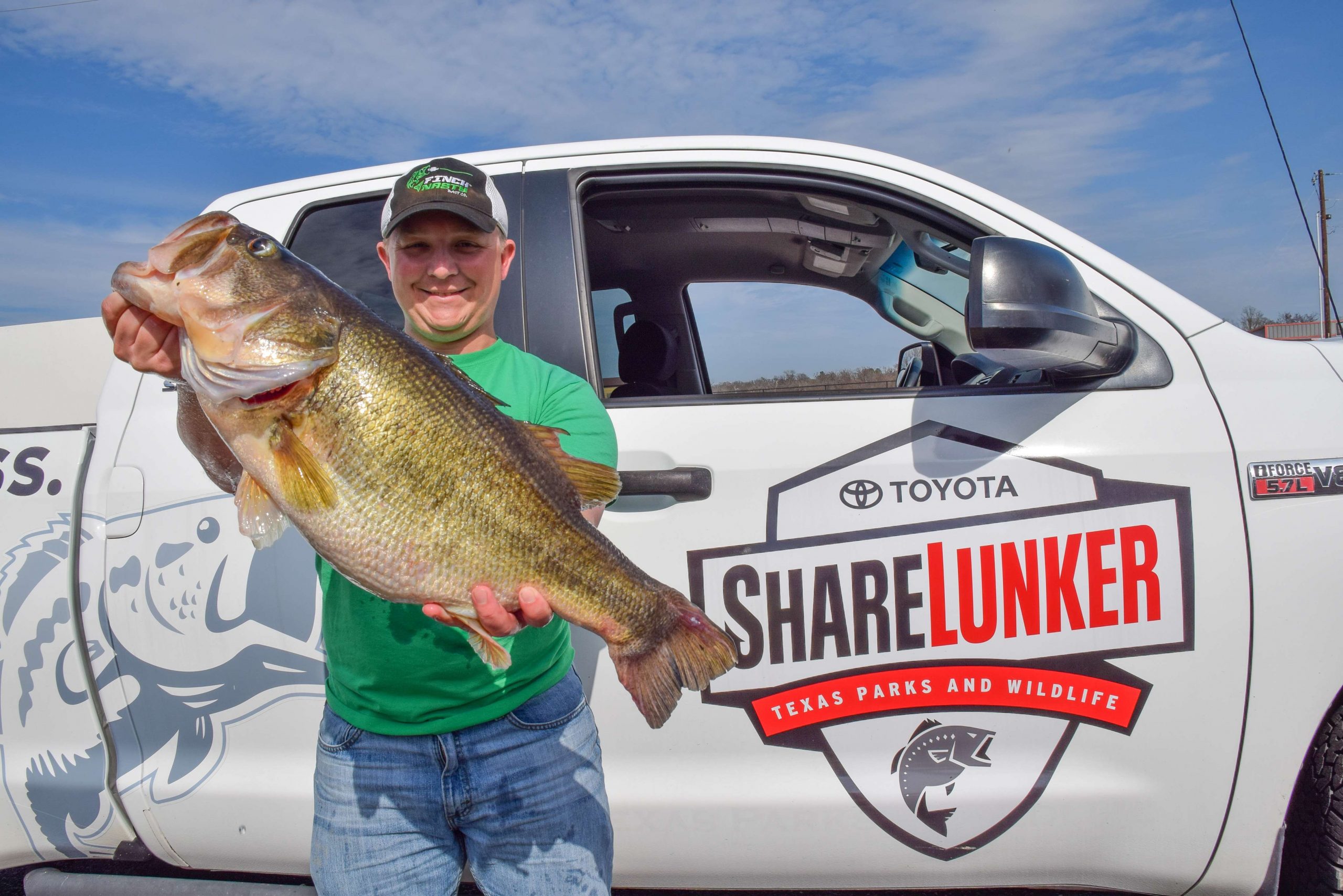
ATHENS, Texas — Advanced genetics research and more angler participation can make Texas bass fishing even better, thanks to what is next for the Toyota ShareLunker program.
“Where ShareLunker is going will be very meaningful to anglers in the future,” said Dave Terre, management/research chief for the Texas Parks and Wildlife Department. “With their continued participation we will do great things together.”
How that will happen is with more 13-pound and over largemouth donated to the program. Currently, largemouth stocked into Texas waters are Florida largemouth. Eventually those will be replaced by genetically superior ShareLunker fish, which will become the brood stock used at Texas fish hatcheries.
“What we are doing is the best thing to happen to largemouth fisheries management in decades,” said Dave Terre, management/research chief for the Texas Parks and Wildlife Department. “The millions of Florida largemouth we are stocking now will be replaced by millions of ShareLunker fish.”
TPWD now has the scientific tools and brains to make this happen. That is creating a genetically superior largemouth bass that will grow even faster than fish already being stocked. More bass, bigger bass and bass that get there faster. Sound too good to be true? The answer is no and it goes back to the early days of largemouth bass fisheries management in Texas.
Florida largemouth bass were first stocked in Texas in the 1970s, just as they were throughout the South. The mindset back then was the Florida-strain largemouth grew to a bigger size than their northern-strain relatives. There was little genetic evidence to support the claim other than how the scales tipped in their favor.
That all changed in 1992 when TPWD began selective breeding of ShareLunker entries weighing 13 pounds or more. The idea then, as it is now, was that using big bass for brood stock resulted in bigger offspring. When those offspring reached 13 pounds the cycle began all over again as those fish became next generation ShareLunkers.
To track the success of the program TPWD began collecting genetic samples of the ShareLunker entries. Creating a pedigree of the offspring would not come until the technology became available in the next decade, along with the money to fund it.
That came in 2009 when Gulf States Toyota became a key ShareLunker sponsor. The support funded the hiring of geneticists, and the technological tools for taking the research to the next level. The first step taken was determining the purity of the Florida strain largemouth.
“We found the odds of getting a true lunker were higher with a pure Florida bass than it was with a bass that only had a percentage of the Florida genes,” said Todd Engeling, TPWD chief of hatcheries.
“Now what we are doing is defining what gene sequences are driving those 13-pound fish,” continued Engeling. “When we find that needle in the haystack it will be our best chance of finding that pure Florida bass, not just a percentage, and when we do it will take our brood stocking program to the next level.”
Engling said the genetics research now in place uses DNA fingerprints to identify ShareLunkers that can be traced back through the program.
“Identifying individual fish and basing that on a genetic code allows us to develop a pedigree system,” he explained. “For example, we can now identify direct offspring from ShareLunker parents.”
A breakthrough came from results of a study that monitored growth performance of selectively bred ShareLunkers compared to bass in the wild. The results underscored how the genetics research, and the ShareLunker program were paying off.
“We found that the ShareLunker Florida largemouth get heavier and longer than what you see in a native bass population, which is more of a mixture,” said Terre.
What is more, a ShareLunker caught in 2017 at Marine Creek Reservoir was a stocked fingerling traced back to a female caught from Sam Rayburn. For the first time, TPWD researchers were able to trace the first progeny of a ShareLunker entry. That fish was proof that selective breeding worked.
“The more we backtracked into the program using the historic data the more evidence we found of what happened at Marine Creek,” said Terre.
What is to come will take bass fishing in Texas to another level, just as ShareLunker did in 1986.
“Instead of using pure Florida bass as our brood stock we are going to use pure Florida bass that are direct descendants of ShareLunkers,” said Engleing. “Eventually all of our hatchery brood stock will be offspring of ShareLunkers.”
Engling said the research also proves the enhanced ShareLunkers outperform the current Florida bass in the hatchery system. They also outperform pure Florida bass.
“They will grow bigger, faster, and the more we stock the sooner they will reach trophy size,” added Terre.
Even with the ability to track the integrity of those fish the need will continue for ShareLunkers caught from the wild.
“We need those fish to continue the rebuilding of our brood stock as those fish die off,” said Engeling. “The continual influx of new ShareLunkers will help us continue building the brood stock from the Legacy Class Lunkers.”
And for Texas bass fishermen and visiting anglers that means more and bigger bass.

